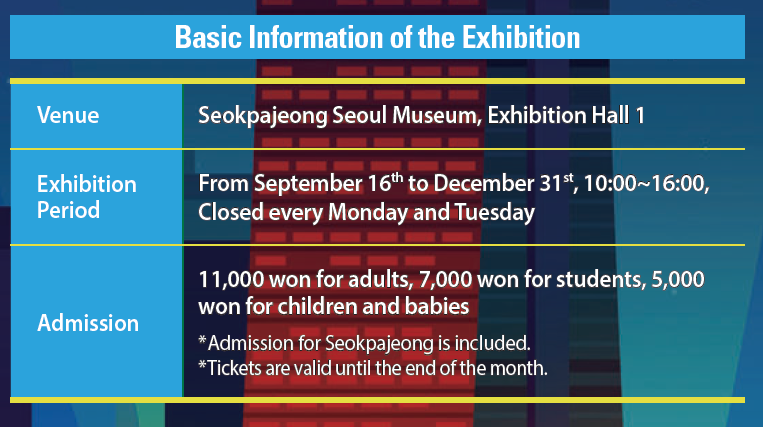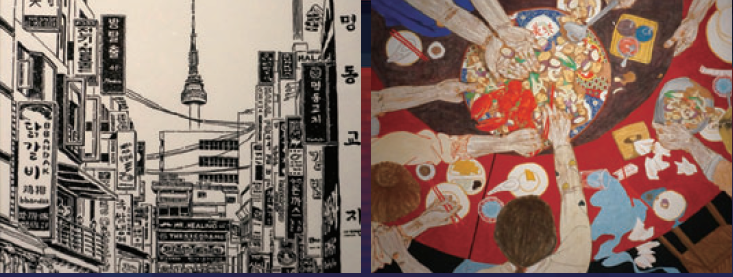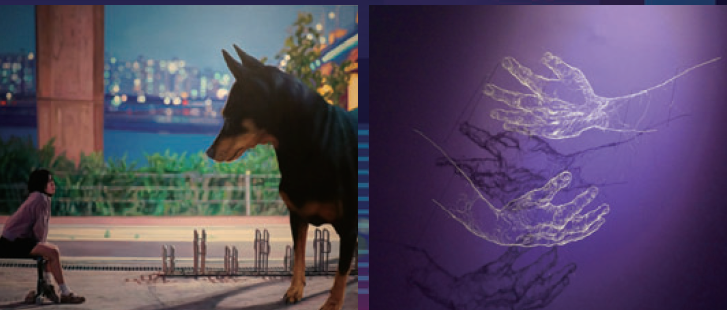December is the month that wraps up a year, and it has been almost one year since the outbreak of the pandemic crisis. Despite the diverse happenings, emptiness and loneliness exist within cities due to social distancing. Modern people living in large cities form and enjoy urban sensitivity in unique ways. The Sungkyun Times (SKT) will introduce the exhibition My Nights Are More Beautiful than Your Days, which displays various objects of cities, to review the urban sensitivity that the artists expressed.
Where Daily Life of a City Turns into Art
An Exhibition That Captured Various Urban Sensitivity

Unlike in the past, the modern generation experiences urban sensitivity by accepting and feeling the stimuli of cities. In the essay The Metropolis and Mental Life by George Simmel, a sociologist from Germany, a big city is described as a place where lonely and isolated individuals exist, and social bonds have disappeared. The formation of big cities shocked humankind, and people started to create new cultures. People feel a vague longing for big cities, which made cultures such as city pop and neo-retro. The objects that represent urban society such as skyscrapers and convenience stores reflect the loneliness and freedom of modern life, and the perspective of seeing these objects is based on cultural differences. Seoul Museum pays attention to the sensitivity of the city, and visitors will be able to discover the art of daily life through the exhibition. There are various contents that illustrate the cities, including painting works, videos and photo artworks. Moreover, questions and answers about how each artist thinks about cities raises the interest of visitors.

Artworks of the Exhibition
Daily Life of the City
Various Views of Seoul, by Seol Dong-ju
Seol illustrates various scenes of Seoul through drawings with pen. His artworks with achromatic colors seem inattentive at first, but the details of cities bring vivid energy and remind the memories of each city by leaving viewers with the chance to imagine the cities freely. Seol regarded letters as the iconic symbol of cities, so letters on signs or boards in his works are described in great detail.

Mealtime in City Life, by Lee Chae-won
For Lee, mealtime is necessary not only to satisfy hunger but also to realize herself as a component of society by communicating with others. She shows how people gain energy through mealtimes, which is the most ordinary yet important part of their everyday routines. Lee regarded people as the iconic symbol of cities because cities are formed by the choices and preferences of people, and this concept is expressed by various images of people.
Ironic Aspects of City Life
Showing the Reality of Youth, by Na Su-min
Na expresses the reality of today’s youth that have lost their sense of leisure and relaxation. The critical point is that the artist ironically used a pinkish color, which is originally the representative color of youth, to illustrate the current situation wherein limitless competition and lethargy exist. Her artworks also console youth by giving them the courage to overcome the situation.

Cities Concentrated with People, by Kim So-hee
Kim describes the concentration and objectification of people with her unique attentiveness to details. People are crowded into objects that represent the cities, such as with canned food. Her artworks form several series, and each series has two works. The first illustrates the situation of 2017, whereas its pair illustrates that of 2020. Unlike the first piece, which is crowded with people, the second work describes social distancing by leaving vacant places among the crowd.

Healing the People in City
Pets That Comfort People, by Jung Woo-jae
A girl in Jung’s artwork is experiencing adolescence, and her situations reflect the lives of modern people. An adolescent girl is in the transition phase between childhood and adulthood, and she agonizes about her psychological ego and relationships. A companion animal plays the role of comforting the girl. The size of the animal is extremely big, which cannot exist in reality, but represents the emotional stability it provides. Curing the Pain of People, by Jung So-yun Jung used threads and wires to produce elaborate and stereoscopic artworks. She intends to cure her family and people who are suffering from pain. The titles of her works also give a sense of warmth, such as Love from Father. She observed the sufferings of many people after coming to the city, especially in hospitals full of patients from all over the country. Through her piece, she embodied hands that cure, and viewers can feel comfort and relief from her works.

Nights in the city can make people feel more emotional and trigger various feelings. Even though life may seem lonely, intense, and repetitive at times, beauty is still alive amidst the darkness. Anni Albers, a famous textile artist and printmaker, said, “Art is something that makes you breathe with a different kind of happiness.” Artworks that capture this kind of beauty will lead to fresh and calm feelings. The SKT wishes for Kingos to look back on their life through this exhibition
